Dear Classical Wisdom Readers,
For the classical enthusiasts and would-be archeologists among us, the island of Crete offers a veritable embarrassment of riches.
You probably already know of the storied Palace of Knossos, a truly remarkable find in and of itself. Less known is the smaller Palace of Phaistos, further to the south of the island, where the legendary disk was uncovered.
The second largest Minoan city was located by Thomas Abel Brimage Spratt, who was a serious surveyor. The English vice-admiral employed a bit of simple geometric reasoning and some directions thanks to Strabo, who said:
Of the three cities that were united under one metropolis by Minos, the third, which was Phaestus, was razed to the ground by the Gortynians; it is sixty stadia distant from Gortyn, twenty from the sea, and forty from the seaport Matalum; and the country is held by those who razed it.
And viola! There it was.
Spratt also happened to play a critical role in the discovery of Troy….his map being where the spot was marked. Talk about a win for hydrographers!
What’s amazing to remember is that this was in 1853, almost half a century before Arthur Evans was making a splash at Knossos in 1900, and so Spratt found it without either the concept of Minoan civilization nor the decipherment of the Linear B syllabary by Michael Ventris. Likewise for the Italian archaeologist Federico Halbherr, who despite being a good friend of Arthur Evans, still beat him to the punch.
But what of Phaistos itself?
Traversing in the high midday heat (a curse of not being morning people), we found the “King’s Megaron”, the northernmost of the “Royal Apartments”. Comparable to a corresponding room in the Palace of Knossos, the entire apartment would have been richly decorated with views over Mount Psiloritis and the sacred Kamares cave.
We tried to imagine life 4,000 years ago… back when Phaistos was “well populated”, as it was later described by Homer. While it was regularly destroyed by earthquakes, it was rebuilt again and again… until 1400 BC when the early Greeks gave both Phaistos and Knossos the final blow… never to be used again.
One of my favorite parts was seeing all the storage jars, hidden away. I envisioned the most famous discovery found on the Palace (beyond the Palace itself); that of the Phaistos Disk. Oh how I would have loved to see that piece in situ, with the ruins and the majestic vistas as a backdrop to this very unique, very mysterious find.
Indeed, to this day, our knowledge of the Phaistos is limited… but what do we know? Is it real? Is it fake? And did it really belong to the Minoans?
Read on below to learn about this fantastic find.
All the best,
Anya Leonard
Founder and Director
Classical Wisdom and Classical Wisdom Kids
P.S. The Minoan eruption of Thera, also referred to as the Thera eruption, was a catastrophic event that forever changed the ancient world.
One of the largest volcanic events on Earth in recorded history in fact, it devastated the island of Thera (now called Santorini), including the Minoan settlement at Akrotiri... But what happened before this disastrous phenomenon? What did the Minoans do... and where did they go?
Classical Wisdom Members, you can discover what happened to the Minoans here:
Not a Member? Choose which subscription suits you best and unlock ALL of Classical Wisdom’s resources here:
The Mysterious Phaistos Disk
by Danielle Alexander
Amongst the impressive architecture and mesmerizing frescoes left behind by the Minoans on the island of Crete, there is one particularly puzzling artefact. For over a century, scholars have debated on the origin, function and translation of the Phaistos Disk, which was found by the Italian archaeologist Luigi Pernier in 1908. Uncovered from a ruined room of the Palace at Phaistos, the enigmatic artefact has troubled archaeologists and linguists alike, whilst also being the inspiration for a plethora of pseudoscientific writings.
The Phaistos Disk is made of clay and is 15 cm (5.9 in) in diameter. Scholars remain unsure if the clay is Cretan in origin or imported, but the artefact is thought to be Minoan-made.
The main mystery, however, is in the imprinted hieroglyphic-esque signs – a total of 241 imprints made from a corpus of 45 individual signs placed over both sides of the disk. It is currently being held by the Heraklion Archaeological Museum, which admits that the inscription is contested but suggest the text is potentially a hymn or magical in nature.
Phaistos
The city of Phaistos, where the Disk was found, was occupied from the Late Neolithic of Crete (ca. 3600-2800 BCE). Its age and grandeur are comparable to Knossos, a palace on the north of the island that is famed for its painted frescoes.
The Palace of Phaistos is located on one of the dominating hills of the Mesara Plain, 5 km from the coast. It is on the southern side of the isle and faces eastwards. It is thought that Phaistos was named after a grandson of Herakles.
Along with most of the Minoan cities, Phaistos was destroyed in the earthquakes, and possibly tsunamis, that occurred in the aftermath of the Category 7 volcanic eruption of Thera, Santorini (c. 1627-1600 BC). Prior to these cataclysms, the Minoans were a fearsome thalassocracy (sea power) comparable to the mighty cultures of Egypt and Mesopotamia:
‘The Mediterranean Sea itself was one highway of influence and interchange between communities. So too were the great rivers, the Tigris and Euphrates and the Nile.’
(Willett, 1973:34)
Evidence shows Crete was involved in extensive trade networks with their neighbors that operated from a harbor on the south side of the island. From here, they shipped Minoan-made items such as shoes, boxes, weapons adorned with gold and lapis lazuli, and other elaborate trinkets to Anatolia, Mesopotamia, northern Africa and to the Syro-Palestine coast.
Tablets discovered at Mari, on the banks of the Euphrates, reveal that Crete was known as ‘Kap-ta-ra’ to the Babylonians. On the other hand, the Egyptians and Canaanites referred to the inhabitants of Crete as ‘Keftiu’ and ‘Kaphtor’, respectively.
The Debate
Despite many attempts of interpretation, there is no widespread academic agreement to what the Phaistos Disk says or what it was made for. The fact it was found in a Minoan context does not equate to it being a Minoan-made object due to the extensive trade network of the Bronze Age. Some scholars argue that the Disk was shipped over from Anatolia. However, this stance has been equally refuted; Sterling Dow (1954) claimed the Disk is too fragile to have been shipped in.
Some have argued that the debate is futile, suggesting that the disk is a forgery. According to Jerome Eisenberg, the crafting of the Disk was fueled by Pernier’s jealousy against Sir Arthur Evans and Federico Halbherr, who were making ground-breaking archaeological discoveries at Knossos and within Minoan inscriptions, respectively. For Eisenberg, there are clear indicators that the disk is a fake, such as the uniqueness, the clean-cut edges, and the purposeful and evenly distributed firing of the clay – although Pernier did not know it at the time, the Minoans did not fire their clay tablets intentionally. Many clay items were fired during accidental infernos during the destruction of the Palace.
Furthermore, Eisenberg believes the irregular placement and strikingly naturalistic style of the stamped signs is evidence of them being made up as they go along. There is also a lot of corrections on the Phaistos Disk, which is not characteristic of known ancient documents. The stamps themselves have been the subject of debate; scholars theorize that the stamps were made of wood, ivory, lead, stone, gold, silver, or bronze – which, doesn’t narrow it down… Despite this deeply contested detail, archaeologists have yet to uncover any stamps.
Generally, the opinion of Eisenberg is not accepted, and the debate continues. Most interpretations estimate the Disk’s age by addressing the context in which the artefact was found. The ruined room contained items that have been carbon-dated to the Middle Minoan period, although the Disk may have slipped from a higher – therefore later – layer. This means that estimates of age range between 2100-1100 BC, with most scholars concurring with Pernier that the Disk dates to c. 1850-1600 BC, which coincides with the transformative Palatial Age of Crete.
Decipherment
Attempts to decipher the Disk have been creative and contested, ranging from administrative document to an adventure myth, an almanac or calendar-diary to a call to arms or a list of soldiers, a funerary record or healing ritual instructions, a hymn or prayer, a judicial court list, a magic inscription, the palace schedule or site plan, a poetic verse or a political treaty, maybe it is the proof of a geometric theorem or a record of gifts made to a temple, a sacred text or one used to teach reading. Or, maybe, it is a board game or game of chance or musical notes for a stringed instrument.
Benjamin Schwartz wrote a lengthy two-part article on the Disk (1959), that stated the Disk was to be read from its outer coil, anti-clockwise towards the centre. Since this publication, several other scholars have agreed that anti-clockwise, rim to the center, is the correct way to read this text.
For Schwartz, the disk is Cretan in origin and linguistically connected to the Linear A and B scripts. Furthermore, he thought that the language itself was of Indo-European origin, similar to Mycenaean Greek. With this belief, Schwartz attempted to translate some of the sign-based script. Accordingly, he claimed to have deciphered the Disk, with the signs indicating sacred place names along a pilgrim route.
Cretan hieroglyphics, Linear A and Linear B are the known yet vastly mysterious scripts of Crete. Linear A remains untranslated and is thought to represent a different language to the translated Linear B. Some decipherments link the hieroglyphic-style script of the Disk to Linear A, while others link it to Linear B. Some scholars do not link the scripts at all, seeking other languages to connect to the Disk.
Decipherments have involved a multitude of different languages including archaic Greek, Proto-Ionian, Semitic, Luwian, Hittite, Basque, Coptic, Georgian, Colchian, Kartvelian, proto-Slavic, proto-Finno-Ugaric, proto-Hungarian, Indo-European and finally, Minoan. Some have even interpreted the Disk as having linguistic links to Chinese and Polynesian, although the geographical distance immediately raises doubt with these decipherments.
Computers have aided in some translations. Computer Scientist Peter Revesv (2016) deciphered the disk using ‘established correspondences between Cretan writing symbols and other ancient scripts’ such as Phoenician, South Arabic, Greek and Old Hungarian. He concluded that the Phaistos Disk is an example of Cretan hieroglyphics in the Minoan language, which likely had a common ancestor with Hungarian. According to Revesv, the text conveyed an ancient sun hymn that was connected to the winter solstice ceremony and revealed a mythological explanation of the daily journey of the Sun. Revesv is so confident in his translation that he has started to construct a linguistic database (AIDA) for future scholars of Minoan scripts.

Approaching from a different perspective, Brent Davis (2018) does not present a possible language for the Disk but identifies striking similarities between the signs of the Disk and those of Linear A and Linear B. However, it is also noted that the signs imprinted on the Disk are slightly more complex and hieroglyphic in form than the Linear scripts. To conclude Davis argues that the sign-based lexicon represents the same language encoded in the undeciphered Linear A script. This conclusion is quite convincing considering the Disk was found alongside a Linear A tablet.
The most recent of decipherments is that by Gareth Owens, a linguist and archaeologist. He has spent 30 years working on his interpretation, using the goddess Astarte as his key to the code. He revealed his idea at a collaborative talk hosted by the National Hellenic Research Foundation (NHRF) and the Technological Educational Institute (TEI) of Crete in 2016.
For Owens, this is a religious text honoring the Minoan goddess of love, who is connected to the Mesopotamian goddess Inanna/Ishtar that later become known to the Classical Greeks as Aphrodite. Despite his enthusiastic claim that the Disk is now 99% decipherable, no subsequent works have yet been published in an academic setting and Owens has since gone silent on the topic.
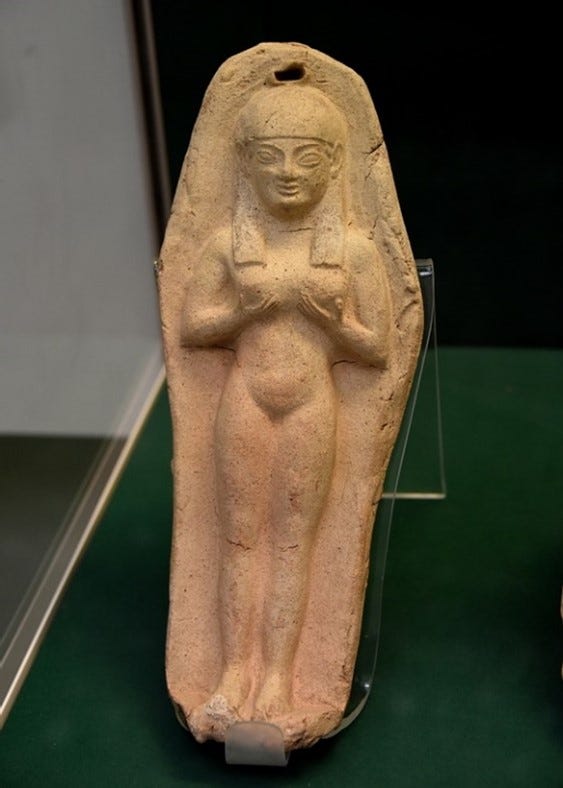
The Phaistos Disk is considered unique, but some artefacts have been deemed comparable. Eisenberg compares the Disk to the Vladikavkaz Disk, found in the Russian Republic of North Ossetia-Alania. It is undeniable that the signs are almost indistinguishable from those on the Phaistos Disk, albeit inscribed rather than stamped. Unfortunately, the Russian disk has been discredited as a forgery and has subsequently vanished.
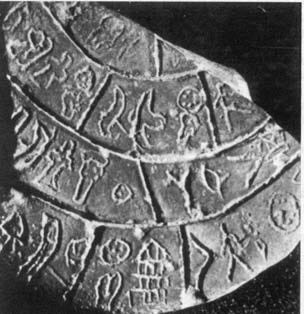
Other comparable artefacts have been found on Crete. In Malia, Cretan hieroglyphics bearing similarities to the signs on the Disk were found on an altar. During the 1926 excavations at Marvo Spillo, Sir Arthur Evans uncovered a gold and silver ring with inscribed signs that are too small to be worn. Unfortunately, the authenticity of this artefact has also been questioned.
Finally, excavations of a cave in central-eastern Crete revealed a plethora of weapons and votive double-headed axes. Unfortunately, the cave was plundered a few years later by locals after children found a golden axe. During 1934, archaeologist Spyridon Marinatos herded up the looted goods, and it was found that some of the more ornate items featured Linear A script. Some even had unique hieroglyphics, but the golden axe was never returned.
Perhaps with a little more digging on Crete, a similar artefact will be located and will enable academics to accurately translate this enigmatic artefact. For now, academics imaginations run amok with inventive ideas and innovative solutions to this millennia-old puzzle.





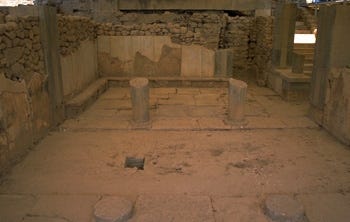
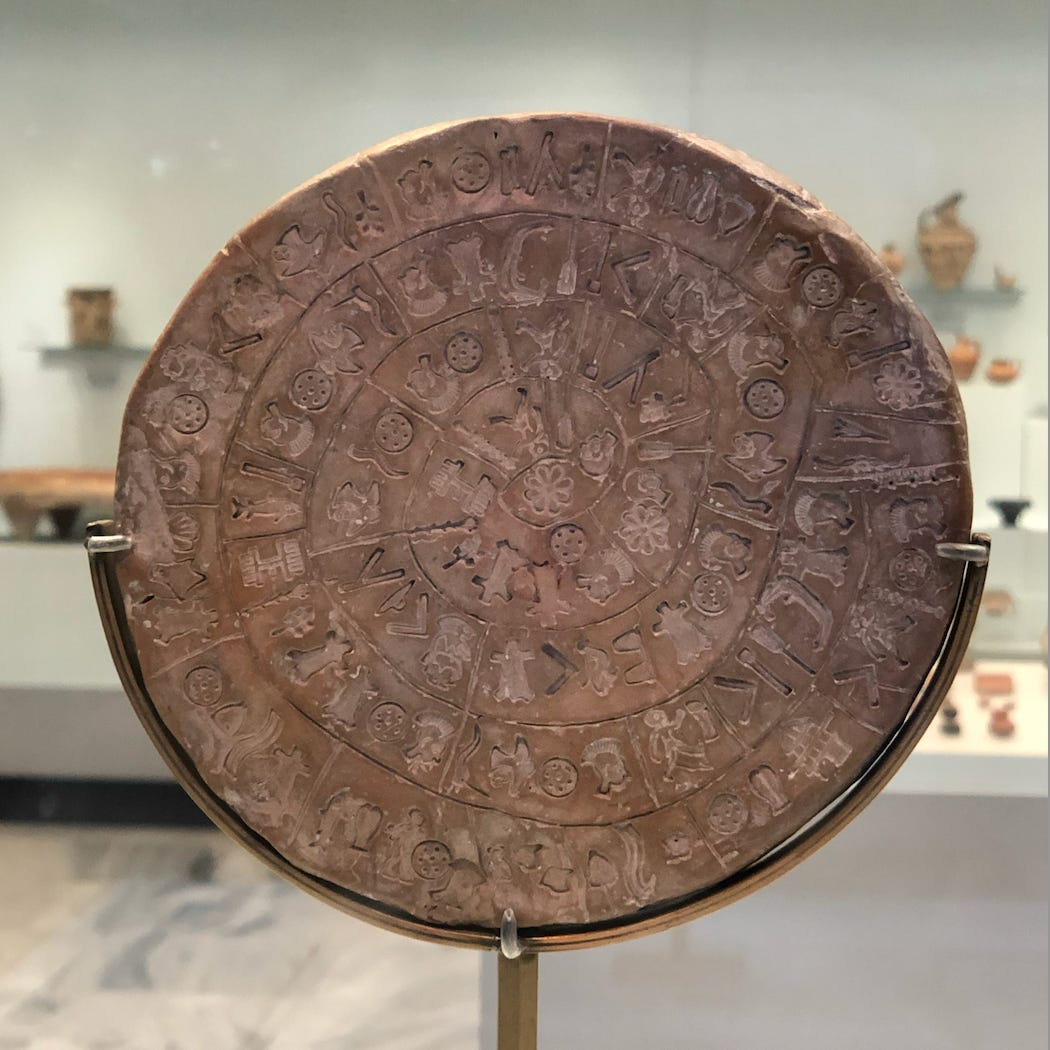


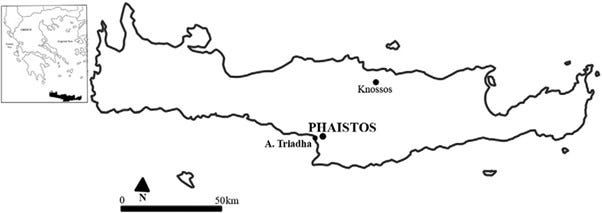
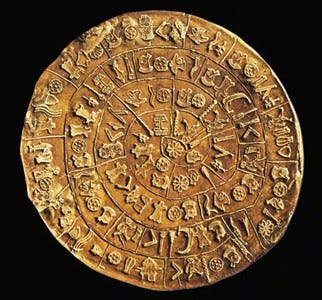
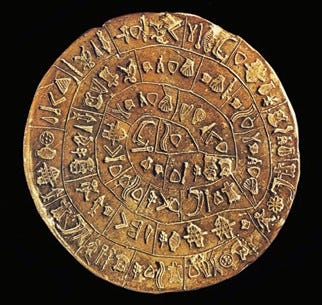
Note an interesting comprehensive research and subsequent book about the Phaistos Disk (“Glyph-Breaker”) by Steven Roger Fischer (1997) - a call to arms by a ruler of the Minoans to help the Greek mainland (Hillos, ancient form of Hellas) in struggle for dominance over The Aegean Sea against the Carians of Asia Minor.
what a wonderful article !!